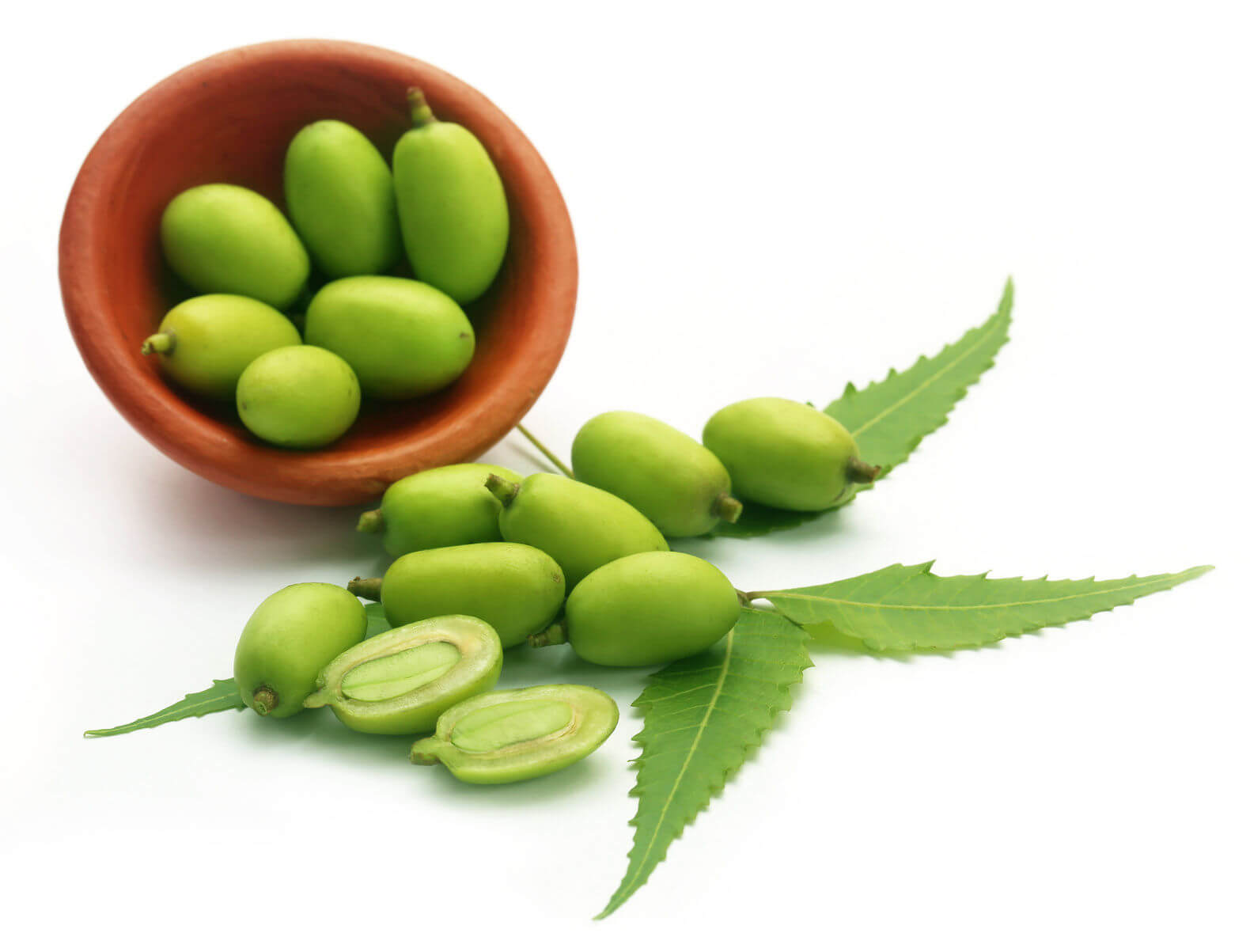Azadirachta indica
Meliaceae
Throughout India. in deciduous forests. also widely cultivated nattive of India It is propagated by seeds naturally as well as cultivated in forests.

A medium to large-sized tree, 15-20 m in height with a clear bole of 7.0 m having grey tubercled bark, leaves compound, imparipinnate, leaflets. subopposrte, serrate, very oblique at base;flowers creamy white or yellowish in axillary panciles, stamina’ tubes conspicuous, cylindric. widening.above, 9-10 lobed at the apex; fruits one-seeded drupes with woody endocarp greenish-yellow when ripe, seeds ellipsoid, cotyledons thick, fleshy and oily. Flowering – fruiting February to June.
The stembark contains tannin. non tannin and red dye. The bark exudes a clear. bright amber coloured gum known as the EAST-INDIAN GUM The leaves contain nimbi, nimbenene, nimbandiol, nimbolide and quercetin.The mature leaves contain protein. fat. fibers, carbohydrates and minerals, calcium,Phosphorus. iron, thiamine, niacin, vitamin, carotene and calcium The amino acids presents are gluatmic acid. tyrosine. aspartic ac., alanine. proline and glutamine The fruits contain gedunin,azadiradione, azadirone and nimbiol.
Bark, leaves, flowers, seeds, al, Gum
Bark - is bitter. astringent. acrid, refrigerant. depurative, antiperiodic, vulnerary, demulcent,insecticidal. liver tonic, expectorant. urinary astringent. anthelmintic. pectoral and tonic.
Leaves - are bitter, astringent, acrid. depurative, antiseptic, ophthalmic, anthelmintic. alexeteric,appetiser, insecticidal, demulcent and refrigerant Flowers bitter, febrifuge etc
Bark - is useful in vitiated conditions of Pitta. hyperdipsia. leprosy. skin diseases, eczema, leucoderrna.pruritus. intrrnittent and malarial fevers. wounds. ulcers. burn, sensation. tumour. tubercular glands,anorexia, vomiting. dyspepsia. intestinal worms, amenorrhoea, lumbago. haemorrhoids, otalga, syphilis & fatigue.
Leaves - are useful in vitiated conditions of Pitta, burning sensation, leprosy. skin diseases.leuooderma, prunuls, ophthalmopathy, intestinal worms. dyspepsia. ulcers. tuberculosis, boils.eczema and malarial a. intermittent fevers. Ten. leaves and flowers are used as prophylactic against to prevent fever etc.